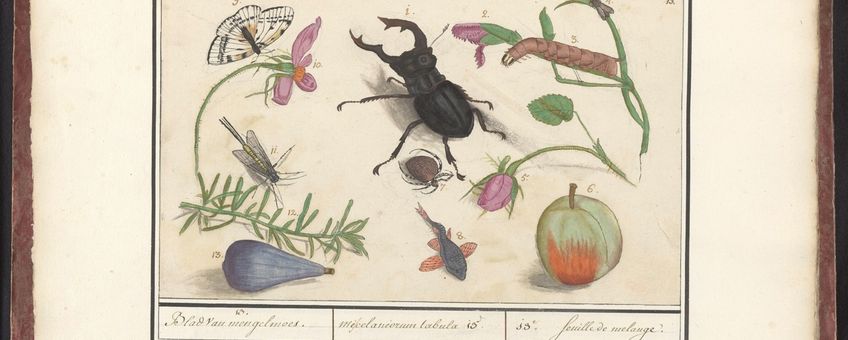
Spot the species on old drawings from the Rijksmuseum
Naturalis Biodiversity CenterAnselmus de Boodt put together this ‘Historia Naturalis’ on behalf of Emperor Rudolf II in Prague. De Boodt was the emperor’s personal physician from 1584 onwards. However, the emperor died before the project was completed, and De Boodt took the drawings back to Bruges. The albums were lent to the Rijksmuseum in 2017 by a private collector and disclosed on the museum’s website. The Rijksmuseum is one of the partners in the project 'Automatic Image Recognition for Museum Collections' that was initiated by Naturalis to investigate how artificial intelligence can be used to register museum collections. For the recognition of specific species or types of objects, models are trained by means of machine learning using scans or photos of objects whose identity has been determined. This includes the development of training sets for recognizing Southeast Asian butterflies, eggs of bird species found in The Netherlands, cone snails, and masks from different cultures.
First step
Before artificial intelligence can be used on illustrations of plant and animal species, enough examples of images are needed in which the species have been identified. The drawings from De Boodt provide an initial step in this direction.
In the 19th century, the drawings from the albums of De Boodt were tagged with captions about the species portrayed. Does this description tally with the spiders, fish, dragonflies, mammals, plants, mushrooms, and shells shown? If the species name used is outdated, what do we call the species today? Which species or subspecies is shown exactly? We are searching for a species names that fit the image as specifically as possible, and we are therefore seeking the help of experts.

Structured
All of the drawings from these albums can be seen on Wikimedia Commons, the image bank that is used, amongst other things, for Wikipedia. We want to provide the drawings on Commons with species names for the animals, plants, and mushrooms portrayed. By searching for this species in Wikidata, the database behind all Wikipedias, and linking it with the image, the information about the drawings will be better structured. Almost every conceivable subject has a unique number in Wikidata. For example, Q148929 is the common columbine or Aquilegia vulgaris. The so-called 'Q-item' contains a wide range of properties, such as the common name in various languages. Information about the taxon author and date and about the rarity of the species is stated too. The item also contains links to the Dutch Species Register (in Dutch only), for example, but also to GBif, to Wikipedia articles, and to images.
Sometimes, several species are portrayed on a single drawing. In that case, several Wikidata items are linked to the file on the Commons. This means we will soon know for each drawing what is portrayed in it. It will then also be possible to find the drawings more quickly via the species portrayed, in many different languages, because the information is cross-linked as 'structured data'.

More information
- Everybody can participate in the project. All you need to do is creating a Wiki account, and then you can start. If you already have a wiki account, go directly to the campaign and tag the species.
- The campaign started on October 1 and will run until December 31, 2021.
Text: Annika Hendriksen, Naturalis
Images: Anselmus de Boodt, Rijksmuseum (on long-term loan from a private collector)
The project Tag the Species is being funded by the Mondriaan Fonds and the Prins Bernhard Cultuurfonds. Naturalis also received funding from NLBIF, the Dutch branch of the Global Biodiversity Information Facility, for this project. Besides the Rijksmuseum, the project partners are Natuurhistorisch Museum Rotterdam, Natuurmuseum Brabant, and Museon.
